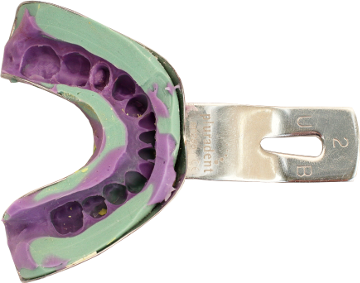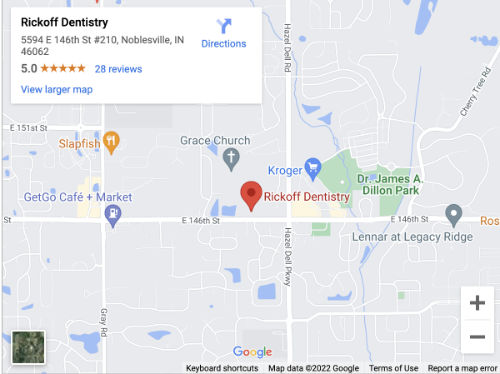DENTAL BRIDGES
Looking for a fixed, secure option to replace one or multiple missing teeth? Then, Rickoff Dentistry has the dental bridge options for you!
What are Dental Bridges?

In technical terms, a bridge consists of one or more pontics (replacement teeth) that are fused to one or more retainers (anchor teeth). Simply put, bridges are two or more dental crowns fabricated as one larger, single unit. This single unit containing multiple teeth is secured into place by permanently cementing the retainer portion of the bridge to the natural anchor teeth, which have been slightly reduced to allow room for the bridge. Bridging teeth together provides the support necessary to maintain a false tooth (or teeth) which can still be used to bite and chew despite not having the underlying tooth root present.
Concerns By Not Replacing a Missing Tooth
If a missing tooth/teeth is not replaced by an artificial tooth via a dental bridge, implant, or partial denture, a multitude of dental issues can develop, such as:
If you have a missing tooth, over time the adjacent teeth can start to drift toward the open space. In addition, as these teeth drift they will often start to rotate or tilt as well, which can ultimately cause a variety of other dental or periodontal issues.
When teeth drift, they not only move out of place, but they can also become tilted or rotated. When the tooth’s alignment becomes distorted, they are much more difficult to clean and care for. Not being able to properly care for these teeth can lead to mild or severe gingivitis and ultimately periodontal disease.
The bone that was supporting the missing tooth can begin to reduce or shrink, due to the fact that there is no more stimulation from the tooth’s roots, now that the tooth has been removed. This bone loss can yield numerous other oral issues, and the process is called resorption.
By not having the proper teeth in place, it’s very possible that fewer teeth will have to accommodate the same amount of biting pressure when someone chews. This undue pressure on the surrounding teeth can lead to dramatic wear and tear on the remaining teeth.
All of our teeth have a dedicated purpose and are used in conjunction with each other to chew and function properly. When someone has a missing tooth/teeth, proper chewing becomes a challenge, and the rest of the mouth and teeth must compensate.
Missing teeth can slightly alter speech, as the tongue is used to hitting the teeth in a certain spot to create certain sounds. If the tooth/teeth are missing, talking normally can be slightly more difficult.
What is the Process for Getting a Dental Bridge?

The impressions, shade, specific instructions, etc. are then sent to a dental lab so that they can fabricate your custom bridge. Approximately two weeks later, the porcelain bridge is returned from the lab and a delivery appointment is scheduled.
At the delivery appointment, the dentist or dental assistant will carefully remove the temporary bridge, and will try-in the final bridge without cement to ensure that the shape, size, shade, bite, and fit are all to the dentist’s specifications. Once the dentist is satisfied with the fit, form, and function of the custom bridge, the bridge will be securely cemented to the prepared teeth, reestablishing full use of the teeth.
Contact the office of Rickoff Dentistry to make your appointment!
SCHEDULE A FREE CONSULTATION
Fill out the form below to request a consultation with Dr. Rickoff.
Thank you so much for your interest!


